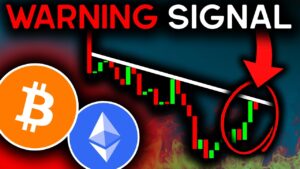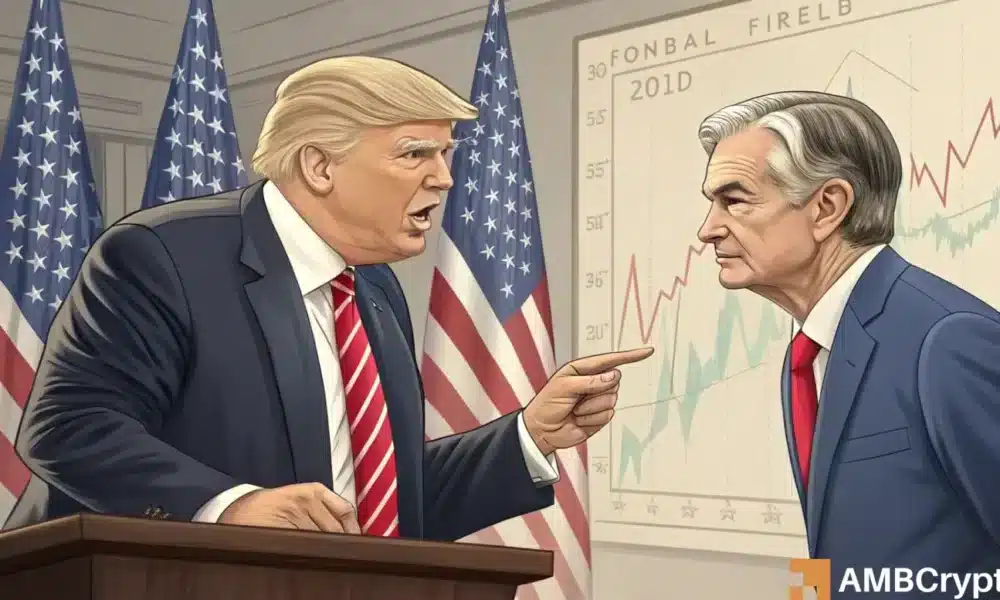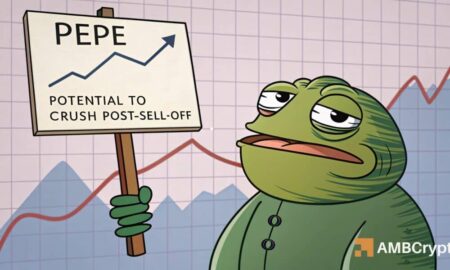Title: Fed’s Inflation Concerns Amid Tariff Hurdles and Crypto Market Resilience: What Investors Need to Know
Introduction
As Wall Street grapples with turbulent economic indicators, Federal Reserve Chair Jerome Powell has highlighted the risks posed by the administration’s proposed tariffs, emphasizing the potential for rising inflation. On April 4th, Powell addressed these concerns at a public conference, indicating that the push for "reciprocal tariffs" could impede the recovery of the U.S. economy. This development comes as the Fed’s efforts to manage inflation seem increasingly complicated, raising questions about the central bank’s ability to maintain its 2% target amid challenging conditions.
Inflation Woes and Economic Readiness
Powell’s remarks underscore the trepidation surrounding inflation as uncertainty looms over economic policy. He noted that while the Federal Reserve had previously projected signs of a "soft landing" following interest rate cuts, the landscape may be shifting, making it more difficult to sustain the 2% inflation benchmark. The Fed chair warned that tariffs are likely to induce a temporary rise in inflation; however, he cautioned that those effects could become more enduring than initially expected. The details provided by Powell suggest that investors should remain vigilant as new inflationary pressures emerge.
Trump’s Call for Rate Cuts
In a notable response to Powell’s cautious tone, President Donald Trump took to social media to urge the Fed Chair to cut interest rates. Trump’s sharp criticisms reflect his belief that current conditions present an opportune moment for such measures. He highlighted falling energy prices and a growing labor market as impetus for the Fed to act swiftly, emphasizing a need to enhance his image. Trump’s call for action places additional pressure on Powell and the Federal Reserve amidst a complicated economic backdrop.
Market Reactions and Mixed Economic Signals
Investor sentiment reacted with anxiety as U.S. Treasury yields plummeted, highlighting fears of a potential recession. The 10-year yield dipped below 4%, signaling shifting expectations regarding the Federal Reserve’s monetary policy. According to the CME FedWatch tool, traders now anticipate at least four quarter-point rate cuts in 2025, doubling previous predictions from the Fed. Meanwhile, the labor market presents mixed signals; although the unemployment rate rose to 4.2% in March, the addition of 228,000 new jobs indicates that economic resilience remains. As inflation persists, the Consumer Price Index stood at a 2.8% increase year over year as of March, suggesting further scrutiny is warranted.
Crypto Stocks Show Signs of Recovery
On a brighter note, the crypto market is beginning to recover from earlier shocks following tariff discussions. Companies like Coinbase and MicroStrategy (MSTR), which experienced significant declines, have started to stabilize, with MSTR showing a 4.01% increase to $293.61. Mining entities such as Mara Holdings (MARA) are also demonstrating signs of resilience, albeit with some firms like Riot Platforms (RIOT) still showing minor losses. The broader crypto market is gaining momentum, seeing a marginal rise in the global market cap to $2.67 trillion, providing some cautious optimism among investors in digital assets.
Conclusion
The economic landscape continues to evolve, with Federal Reserve Chair Jerome Powell’s warnings about inflation and proposed tariffs highlighting the challenges ahead. While President Trump’s calls for interest rate cuts add another layer of complexity, mixed economic indicators reflect a divergence of resilience and concern in the labor market. Meanwhile, the crypto sector showcases initial signs of recovery, giving investors a glimpse of hope amid broader uncertainties. Moving forward, stakeholders will need to stay abreast of these developments to navigate an unpredictable market effectively.
















